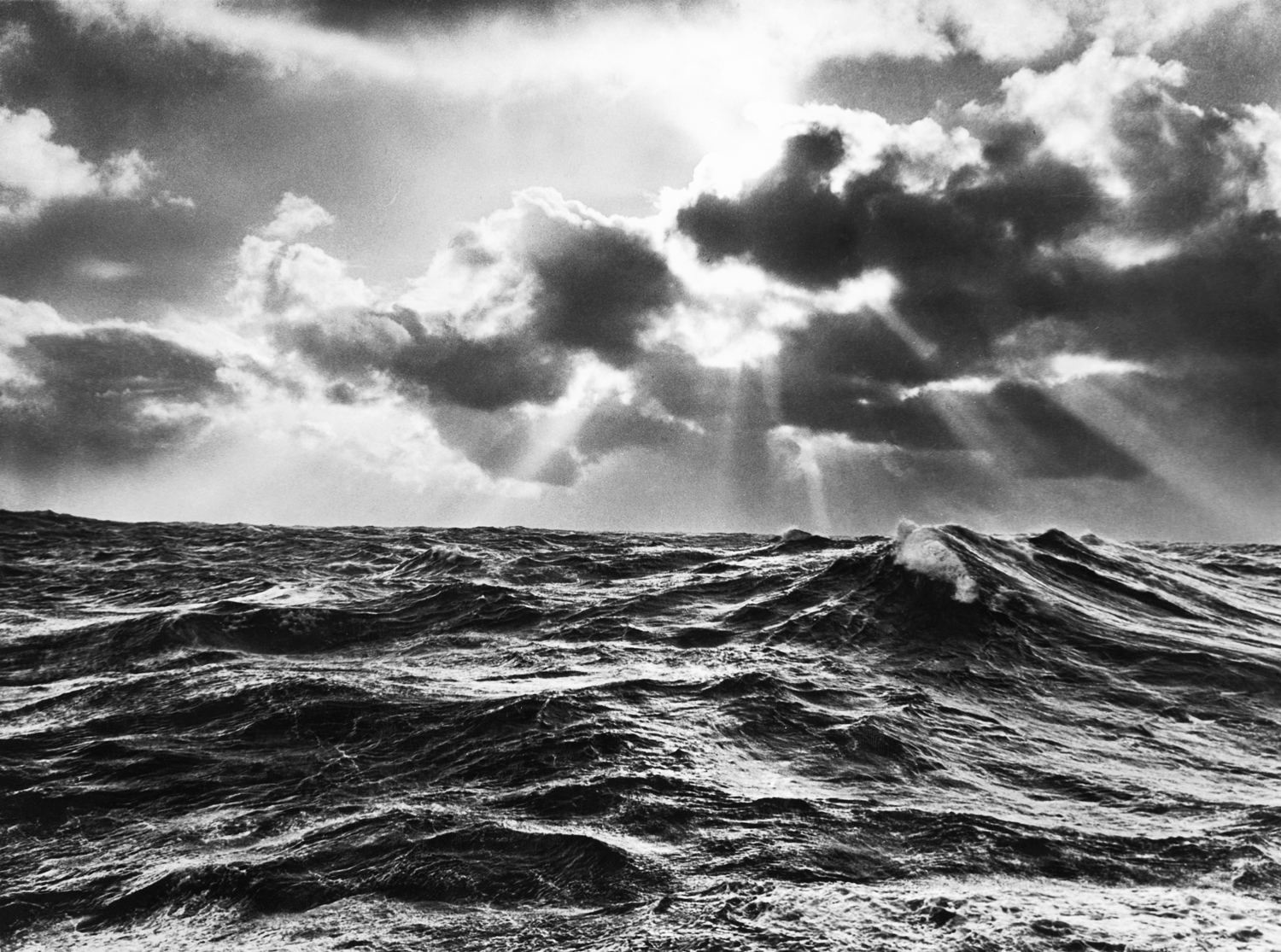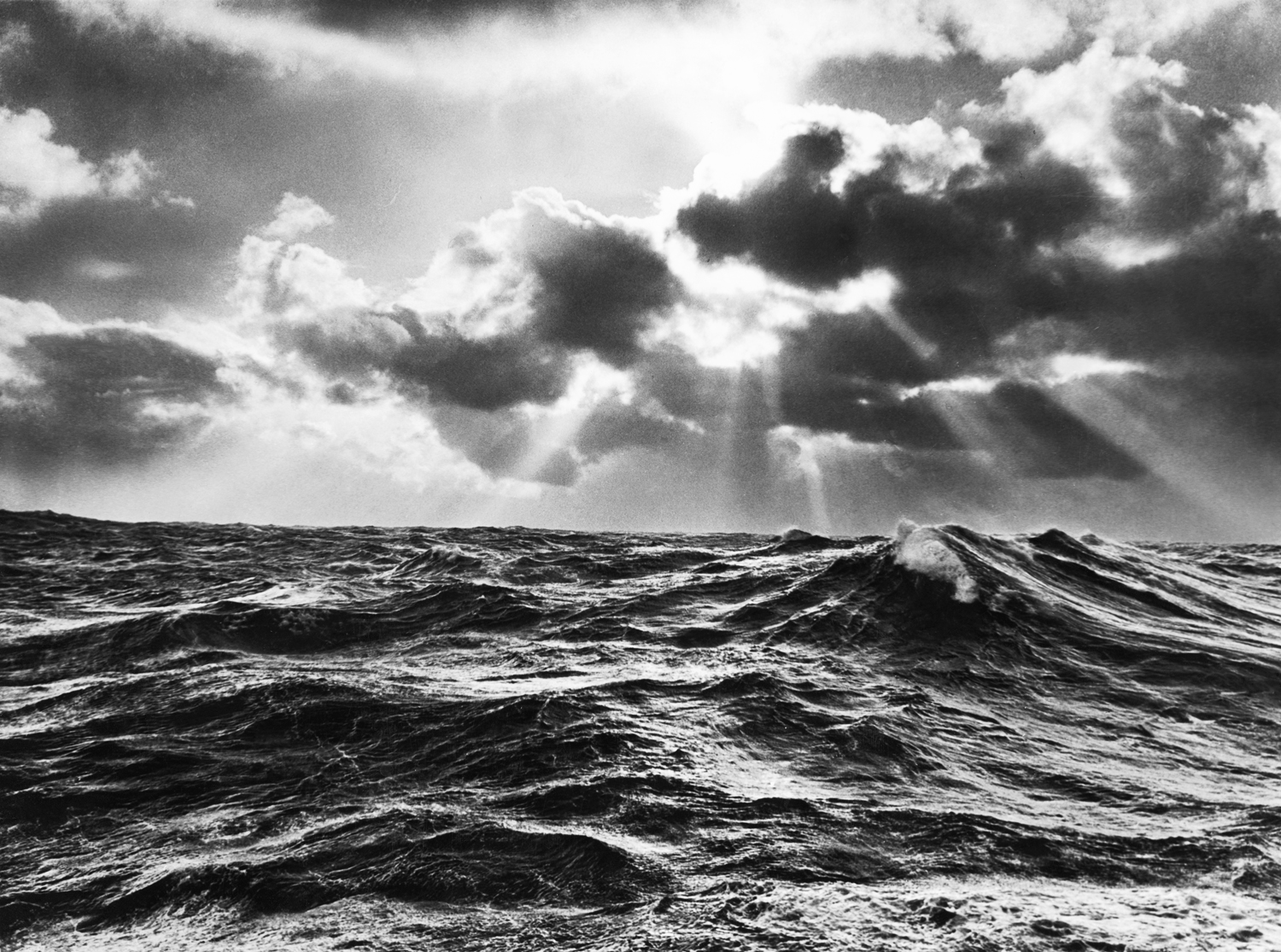
Seventy-plus years ago, in the winter of 1943, LIFE’s William Vandivert made this photograph from the deck of an Allied ship. The photo led off an article titled, simply, “The Oceans” — a multi-page paean to the waters that “rule the Earth and hold most of its life.” Unsurprisingly, the war raging in Europe, the Pacific and North Africa was a central element of the story — as it was an element, to varying degrees, in virtually every issue that LIFE magazine published in the first half of the 1940s.
“Far out in the North Atlantic,” read the caption beneath Vandivert’s picture in the May 1943 issue of LIFE, “gray waves that will batter and freeze a man to death in 30 minutes are whipped high by a sudden midwinter squall.” At the time, World War II’s Battle of the Atlantic was at its peak; for many of LIFE’s readers, even a photograph as seemingly peaceful as Vandivert’s — an empty seascape; the winter sun’s rays breaking through clouds — could spark decidedly macabre thoughts of the threat lurking beneath the whitecaps: namely, “wolf packs” of German U-boats that hunted Allied ships and sailors in those dark, frigid waters.
From late 1939 until mid-1945, in every season, the German Navy’s submarines attacked Allied military and merchant ships in the Atlantic, killing tens of thousands of sailors and civilians (while losing tens of thousands of their own sailors to the destroyers that escorted convoys between North America, England and Europe). It’s unlikely that any man, woman or school-age child in America or Great Britain — or in Germany, for that matter — would look upon Vandivert’s stunning picture when it first appeared in 1943 and see anything but a vast, eerily unpopulated theater of war.
Today, Vandivert’s photograph retains an almost primal power — not because a contemporary viewer would immediately equate the raw, black-and-white image with stealth warfare and violent death, but because of the manifestly primordial nature of the scene itself. Nothing of humanity or modernity mars the picture’s purity: we see the ocean and the sky, and that’s all. With a little imagination, we can convince ourselves that this might well be what the world looked like long before some unknowable, gasping creature pulled itself from the ancient seas on to the land and began the long, stumbling, evolutionary crawl toward homo sapiens.
For countless others, meanwhile, the picture will inevitably bring to mind mysterious and redolent lines from the book of Genesis: “And the earth was without form, and void; and darkness was upon the face of the deep. And the spirit of God moved upon the face of the waters.”
In the end, neither Scripture nor Darwin really comes close to explaining why Vandivert’s photo exerts such a hold. Seven decades is a long time for any photograph to endure. But all these years later, Vandivert’s picture of the North Atlantic’s iron-gray waves under a bleak, wintry sun commands our gaze — and perhaps chills our blood — not merely because it’s beautiful, but because the beauty it captures is so pitiless, and so forbidding.
— Ben Cosgrove is the Editor of LIFE.com

More Must-Reads from TIME
- Donald Trump Is TIME's 2024 Person of the Year
- Why We Chose Trump as Person of the Year
- Is Intermittent Fasting Good or Bad for You?
- The 100 Must-Read Books of 2024
- The 20 Best Christmas TV Episodes
- Column: If Optimism Feels Ridiculous Now, Try Hope
- The Future of Climate Action Is Trade Policy
- Merle Bombardieri Is Helping People Make the Baby Decision
Contact us at letters@time.com